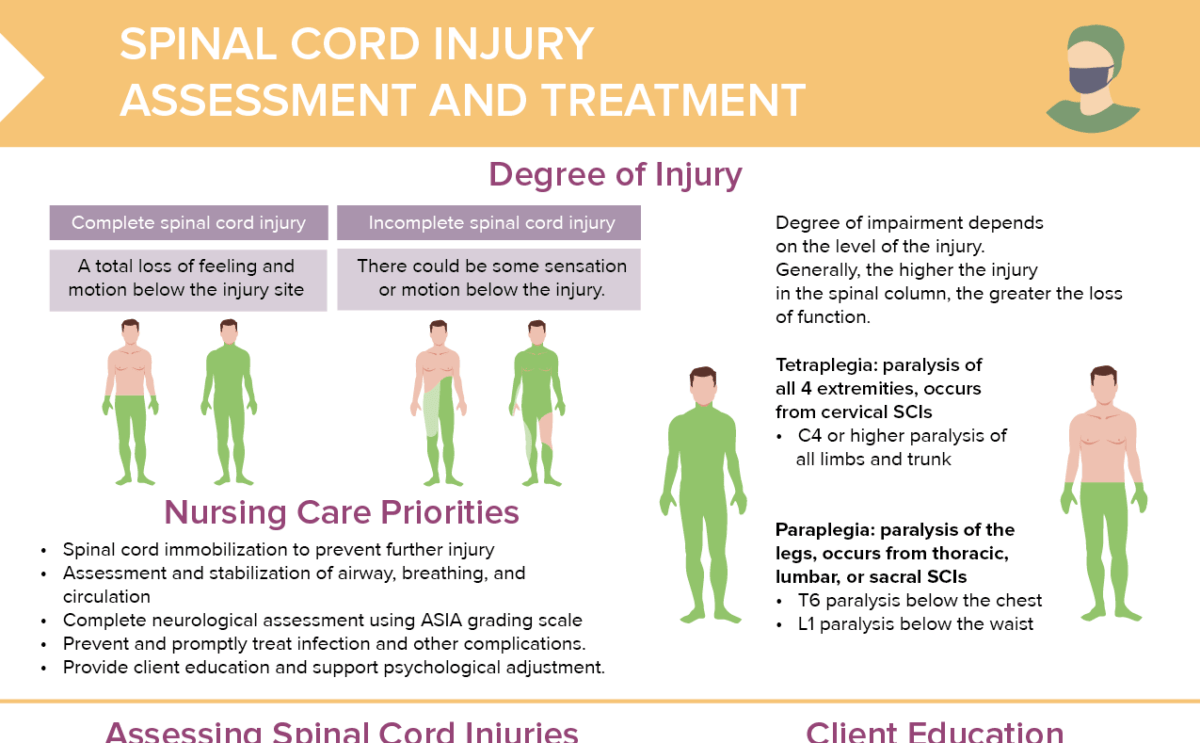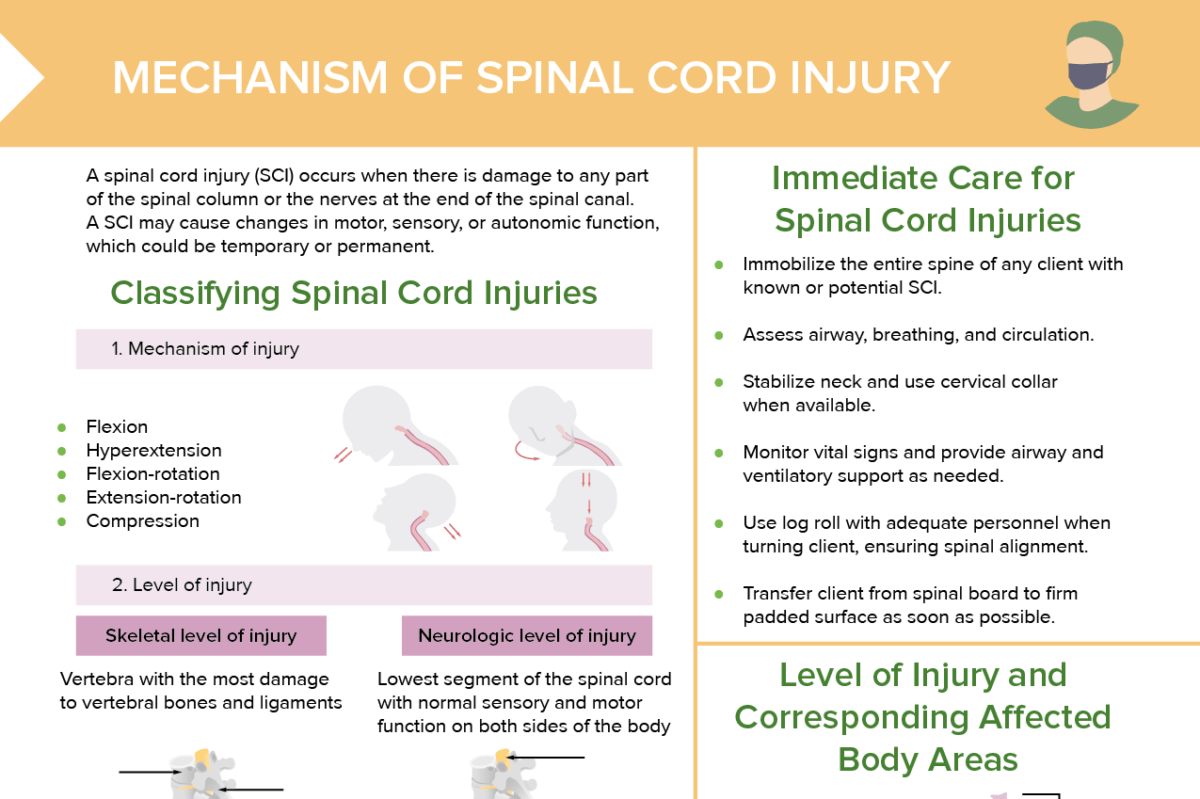What is a spinal cord injury?
A spinal cord injury is damage to any part of the spinal cord or nerves at the end of the spinal canal. Spinal cord injuries can cause changes in strength, sensation, and other body functions below the site of the injury which may be temporary or permanent.
The most common causes of spinal cord injuries are trauma from motor vehicle accidents, falls, violence (such as gunshot wounds), and sports injuries. Non-traumatic causes can include diseases like cancer, arthritis, and spinal cord malformations.
Spinal cord injuries can either be complete or incomplete.
Related videos
How does a spinal cord injury affect the brain?
Spinal cord injuries do not directly affect the brain and do not impair a person’s intellect or cognitive function (unless the injury also involves the brain).
Spinal cord injuries disrupt the communication pathway between the brain and parts of the body below the level of injury, potentially resulting in loss of muscle control, sensation, autonomic functions like bladder control and thermoregulation, depending on the severity and location of the injury.
Classifying SCIs: What are the types of spinal cord injuries?
Commonly, the American Spinal Injury Association (ASIA) Impairment Scale is used to classify spinal cord injuries. It ranges from A (complete) to E (normal), based on motor and sensory examination findings.
Mechanisms of spinal cord injuries:
- Flexion
- Hyperextension
- Flexion-rotation
- Extension-rotation
- Compression
Levels of injury:
The level of an SCI refers to the location of the injury along the spinal cord. It is typically associated with the corresponding vertebra level (e.g., C5, T3, L2). The higher the level, the more body function is typically affected.
- Skeletal level: vertebra with the most damage to vertebral bones and ligaments
- Neurologic level: lowest segment of the spinal cord with normal sensory and motor function on both sides of the body
Common incomplete spinal cord injuries
| Central cord syndrome | Most common, upper extremity deficit is > lower extremity deficit, frequently found in elderly clients w/ spondylosis or younger clients w/ severe extension injury |
| Anterior cord syndrome | Seen in flexion injuries, presents w/ immediate paralysis |
| Brown-Séquard syndrome | Spinal cord damage on one side, ipsilateral motor weakness and contralateral sensory deficit; may result from rotational injury or penetrating trauma |
| Posterior cord syndrome | Uncommon syndrome due to extension injury, loss of positioning sense, good prognosis |
How to acutely care for spinal cord injuries
- Immobilize entire spine.
- Assess airway, breathing, circulation.
- Stabilize neck, use cervical collar if available.
- Monitor vital signs and provide airway and ventilation support as needed.
- Use log roll with adequate personnel when turning client, ensuring spinal alignment.
- Transfer client from spinal board to firm padded surface as soon as possible.
What are the effects of injuries at different spinal cord levels?
In general, cervical injuries can result in quadriplegia and may affect breathing; thoracic injuries usually result in paraplegia (impairment in the lower extremities); lumbar and sacral injuries affect leg function and may disrupt bowel, bladder, and sexual function. The exact effects depend on the injury’s completeness and specific level.

